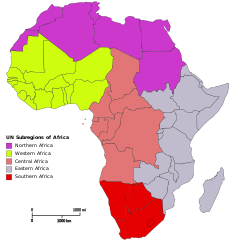Portal:History of science
The History of Science Portal
The history of science covers the development of science from ancient times to the present. It encompasses all three major branches of science: natural, social, and formal. Protoscience, early sciences, and natural philosophies such as alchemy and astrology during the Bronze Age, Iron Age, classical antiquity, and the Middle Ages declined during the early modern period after the establishment of formal disciplines of science in the Age of Enlightenment.
Science's earliest roots can be traced to Ancient Egypt and Mesopotamia around 3000 to 1200 BCE. These civilizations' contributions to mathematics, astronomy, and medicine influenced later Greek natural philosophy of classical antiquity, wherein formal attempts were made to provide explanations of events in the physical world based on natural causes. After the fall of the Western Roman Empire, knowledge of Greek conceptions of the world deteriorated in Latin-speaking Western Europe during the early centuries (400 to 1000 CE) of the Middle Ages, but continued to thrive in the Greek-speaking Byzantine Empire. Aided by translations of Greek texts, the Hellenistic worldview was preserved and absorbed into the Arabic-speaking Muslim world during the Islamic Golden Age. The recovery and assimilation of Greek works and Islamic inquiries into Western Europe from the 10th to 13th century revived the learning of natural philosophy in the West. Traditions of early science were also developed in ancient India and separately in ancient China, the Chinese model having influenced Vietnam, Korea and Japan before Western exploration. Among the Pre-Columbian peoples of Mesoamerica, the Zapotec civilization established their first known traditions of astronomy and mathematics for producing calendars, followed by other civilizations such as the Maya.
Natural philosophy was transformed during the Scientific Revolution in 16th- to 17th-century Europe, as new ideas and discoveries departed from previous Greek conceptions and traditions. The New Science that emerged was more mechanistic in its worldview, more integrated with mathematics, and more reliable and open as its knowledge was based on a newly defined scientific method. More "revolutions" in subsequent centuries soon followed. The chemical revolution of the 18th century, for instance, introduced new quantitative methods and measurements for chemistry. In the 19th century, new perspectives regarding the conservation of energy, age of Earth, and evolution came into focus. And in the 20th century, new discoveries in genetics and physics laid the foundations for new sub disciplines such as molecular biology and particle physics. Moreover, industrial and military concerns as well as the increasing complexity of new research endeavors ushered in the era of "big science," particularly after World War II. (Full article...)
Selected article -

Selected image

Ernst Haeckel, the great populariser of Charles Darwin's theory of evolution, was the first to use a literal tree of life to express evolutionary relationships based on common descent. This version comes from his 1866 General Morphology; several different versions, some highly elaborate and artistic, are found in other Haeckel works. The icon of a tree of life has been used widely since that time; some modern versions include a tangled root system to represent the effects of horizontal gene transfer and symbiogenesis early in evolutionary history.
Did you know
...that Einstein's famous letter to FDR about the possibility of an atomic bomb was actually written by Leó Szilárd?
...that geology was transformed in the latter part of the 20th century after widespread acceptance of plate tectonics?
...that the idea of biological evolution dates to the ancient world?
Selected Biography -

Hans Albrecht Bethe (German pronunciation: [ˈhans ˈbeːtə] ⓘ; July 2, 1906 – March 6, 2005) was a German-American theoretical physicist who made major contributions to nuclear physics, astrophysics, quantum electrodynamics, and solid-state physics, and who won the 1967 Nobel Prize in Physics for his work on the theory of stellar nucleosynthesis. For most of his career, Bethe was a professor at Cornell University.
During World War II, he was head of the Theoretical Division at the secret Los Alamos laboratory that developed the first atomic bombs. There he played a key role in calculating the critical mass of the weapons and developing the theory behind the implosion method used in both the Trinity test and the "Fat Man" weapon dropped on Nagasaki in August 1945. (Full article...)Selected anniversaries
- 1675 - Death of Stanisław Lubieniecki, Polish astronomer (b. 1623)
- 1711 - Birth of Ruđer Josip Bošković, Serbian atomic theorist (d. 1787)
- 1850 - Birth of Oliver Heaviside, English physicist (d. 1925)
- 1872 - Birth of Bertrand Russell, English mathematician and philosopher (d. 1970)
- 1889 - Birth of Thomas Midgley, Jr., American chemist and inventor (d. 1944)
- 1891 - Birth of Rudolf Carnap, German philosopher (d. 1970)
- 1901 - Birth of Vincent du Vigneaud, American chemist and Nobel Prize laureate (d. 1978)
- 1969 - Apollo 10 launches.
- 1974 - Under project Smiling Buddha, India successfully detonates its first nuclear weapon becoming the sixth nation to do so.
Related portals
Topics
General images
Subcategories
Things you can do
Help out by participating in the History of Science Wikiproject (which also coordinates the histories of medicine, technology and philosophy of science) or join the discussion.
Associated Wikimedia
The following Wikimedia Foundation sister projects provide more on this subject:
-
Commons
Free media repository -
Wikibooks
Free textbooks and manuals -
Wikidata
Free knowledge base -
Wikinews
Free-content news -
Wikiquote
Collection of quotations -
Wikisource
Free-content library -
Wikiversity
Free learning tools -
Wiktionary
Dictionary and thesaurus








































































